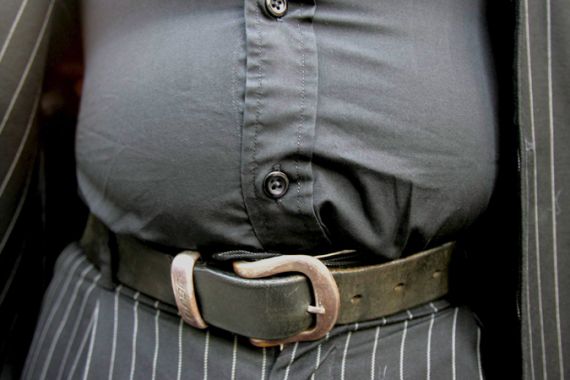‘More than half a billion’ obese
Nearly one in nine of the world’s adults are considered clinically obese, double the numbers of 1980, report finds.

 |
| Obesity, once considered a ‘Western’ problem, is now occurring in many developing nations [GALLO/GETTY] |
More than half a billion men and women – nearly one in nine of all adults around the world – are clinically obese, a report backed by the World Health organisation (WHO), says.
The figures, released on Friday, are nearly double those of 1980, leading doctors to warn that a “tsunami of obesity” is unfurling across the world.
Keep reading
list of 4 itemsUS House approves aid package worth billions for Ukraine, Israel
Ecuador weighs security, international arbitration in latest referendum
‘Triple spending’: Zimbabweans bear cost of changing to new ZiG currency
In 2008, the latest year for which statistics were available, nearly one woman in seven and one man in 10 were obese, the study by Imperial College of London and Harvard University found.
According to the WHO, obesity causes three million premature deaths each year from heart disease, diabetes, cancers and other disorders.
The researchers described the tableau as “a population emergency”.
“[It] will cost tens of millions of preventable deaths unless rapid and widespread actions are taken by governments and health-care systems worldwide,” said the report, published in health journal The Lancet.
The problem has been most prevalent in rich nations, rising most in the US, followed by New Zealand and Australia for women, and Britain and Australia for men.
But many developing countries, especially in the Middle East and in rapidly urbanising areas, are catching up.
The average weight levels in several populations in the Middle East fall just shy of the benchmark for obesity.
Global obesity rates more than doubled for men, from 4.8 per cent of male adults in 1980 to 9.8 per cent in 2008.
For women, the corresponding jump was from 7.9 to 13.8 per cent.
Body mass index
The standard for assessing weight is the body-mass index (BMI), in which one’s weight in kilos is divided by the square of one’s height in centimetres.
A BMI of 25 to 30 corresponds to being overweight, while above 30 is obese.
Pacific islanders weighed in with the highest BMI levels, between 34 and 35, and notched up among the sharpest increases over the last three decades.
In Europe, women in Russia and Moldova were at the upper end of the scale, with BMIs of 27.2 and 27.1, while the heftiest men on the continent resided in the Czech Republic and Ireland.
At the other end of the spectrum, Swiss women were the most svelte, with their French and Italian counterparts vying for second place.
Italy holds the distinction of being the only country in Europe where women’s average BMI declined, dropping from 25.2 to 24.8.